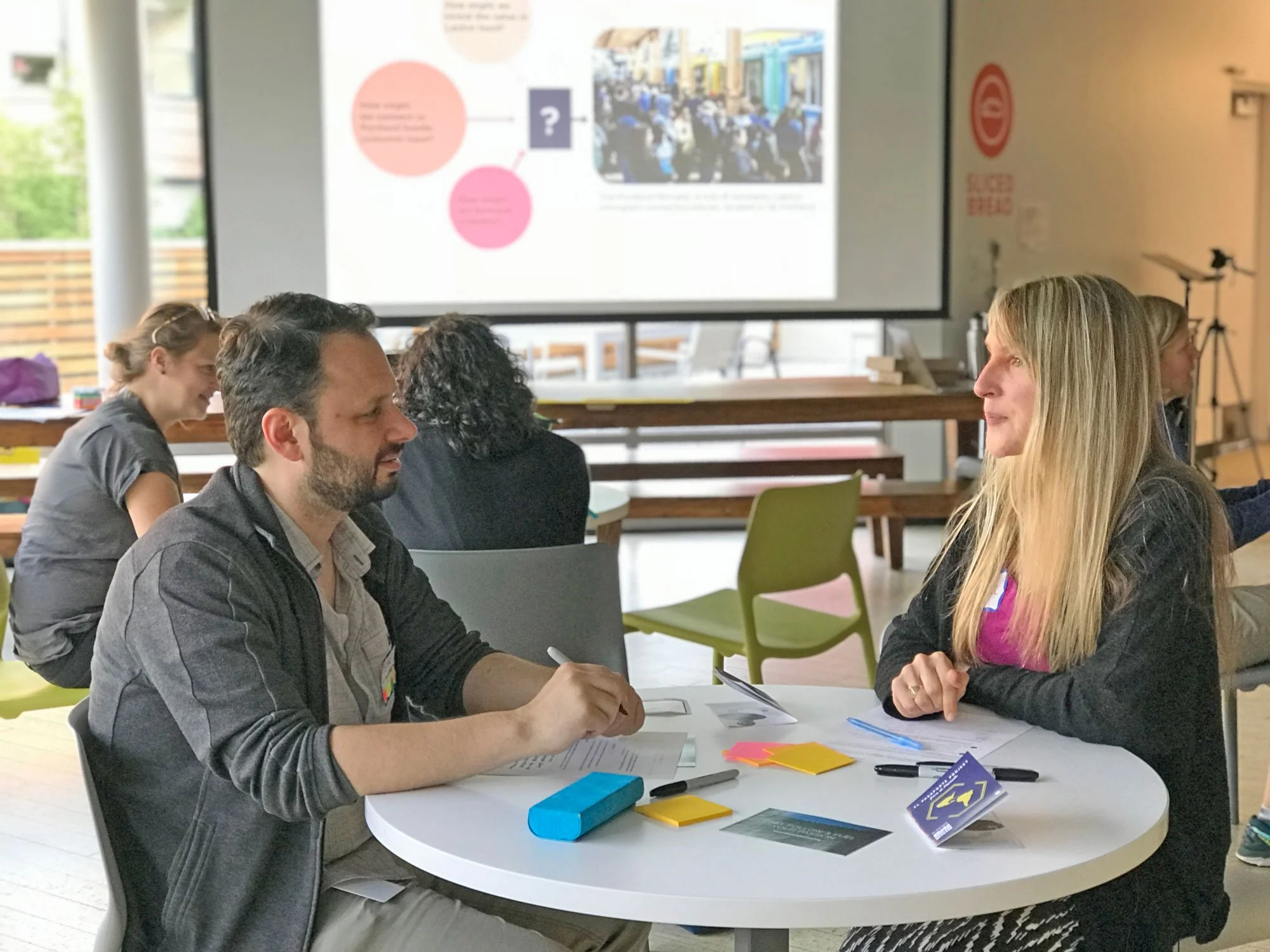Buen Provecho: Inclusive Food Storytelling That Sparked Community Engagement
Buen Provecho is a bilingual, community-led campaign celebrating affordable, culturally-rooted recipes from local Latin American chefs and families—using design and storytelling to increase visibility and patronage for Latinx- and POC-owned businesses at Portland Mercado.
It began as a self-initiated campaign celebrating Latino-owned food businesses in Portland, Oregon. Blending brand strategy, bilingual storytelling, and co-design methods, the project used food as a bridge between cultures—turning everyday meals into moments of connection, visibility, and pride. Explore how inclusive design can foster belonging through community storytelling.
At A Glance
Services: Brand Strategy, Campaign Design, Publication Design, Web Design, Bilingual Copywriting
Role: Creative Director, Designer
Tools: Adobe CC, Squarespace
Partners: Local Latino-owned businesses, Portland Mercado (Hacienda CDC)
Focus: Food justice, cultural storytelling, inclusive design
Outcomes:
- Increased food cart visits for 18 businesses during pilot weeks
- Partnerships initiated with Portland Mercado (Hacienda CDC)
- Recognized on the podcast Latino Founder Hour
Original prototype of the print coupon book for the Portland Mercardo
1. Overview
Buen Provecho is a bilingual community brand and campaign that celebrates affordable, culturally rooted recipes shared by local Latino chefs and families. Developed as a self-initiated design project, it combined storytelling and digital marketing to increase visibility and patronage of Latinx- and POC-owned businesses at Portland Mercado.
The project, originally named El Pasaporte Project, began as a passport-style coupon booklet featuring each food cart’s story, country of origin, and business coupons. Visitors collected stamps as they explored different carts; once the passport was complete, they could redeem it for merchandise and prizes—turning dining into a joyful, community-centered experience.
Customer learning about the Venezuelan food cart at the Portland Mercado
2. Challenges
Starting and sustaining a food business in Portland’s saturated food cart scene can be daunting—especially for immigrant and Latinx entrepreneurs facing barriers around language, marketing, and visibility. Many outreach efforts lacked cultural authenticity, leaving these stories untold.
Buen Provecho aimed to bridge this gap through inclusive design that celebrates food as culture and health as community, strengthening connections between Latinx vendors and the broader Portland community.
Midway through development, two additional challenges surfaced:
Vendor turnover: frequent changes in participating food carts made printed materials unsustainable.
Limited funding: the team needed a cost-efficient model to sustain the campaign.
These constraints led us to a digital-first pivot—QR codes at each cart linked to a bilingual site we could update in real time.
3. Approach / Process
Co-design interviews with vendors and seek community input.
From the start, Buen Provecho was built with the community, not just for it. I collaborated with Latino-owned businesses and community advocates to ensure cultural and linguistic authenticity. I conducted interviews with business owners, shared early design drafts, and integrated their feedback at every stage.
Visual design inspired by Latin American cultural motifs with accessibility in mind.
The design drew inspiration from traditional Latin American textiles and market signage, blending warmth, playfulness, and accessibility. The bilingual copywriting and bright, modular visuals created cohesion across print and digital platforms while honoring the diversity of Latin American cultures represented at the Mercado.
Iterations from community input and adoption of a QR-to-site pivot to handle turnover and funding limits.
After multiple design sprints in and beyond Portland’s design thinking community (at Design Week Portland, the OpenIDEO local chapter, the Social Impact Lab, and the School of Visual Arts in New York City), I refined the concept to make it sustainable amid vendor turnover. Working directly with the vendors, we replaced printed passports with individual QR codes for each food cart, leading visitors to a bilingual website that featured all original content—recipes, stories, and incentives—at a fraction of the cost.
Participants sharing thoughts on the design of Buen Provecho at 2018 OpenIDEO workshop
Participant worksheet at 2018 OpenIDEO workshop
Presenting Buen Provecho at 2018 OpenIDEO workshop
Affinity Diagram at 2018 OpenIDEO workshop
Before & After
Before: Information about the Portland Mercado businesses was scattered across flyers and outdated printed coupons, limiting customer engagement and cross-cart discovery.
After: A simple QR code placed at each food cart linked directly to a bilingual webpage featuring vendor stories, recipes, and rotating incentives. This digital model kept the experience dynamic, accessible, and affordable—allowing vendors to update content easily while sustaining the project at low cost.
QR code test at a Portland Mercado food cart
4. Outcome / Impact
The new format of Buen Provecho:
Strengthened partnerships between Latino-owned food businesses and local community organizations
Earned recognition through community media and events
Delivered a low-cost model that sustained engagement despite vendor turnover
Most importantly, Buen Provecho became a joyful celebration of identity and nourishment—an example of how inclusive design can build bridges between communities through shared culture.
5. Reflection / Lessons Learned
Buen Provecho reaffirmed my belief that design is most impactful when it’s built collaboratively, guided by the voices it represents. It deepened my commitment to inclusive, bilingual, and cross-cultural design practices—principles I carry into every project and team I lead. Designing for change in mind kept costs low and content fresh. Co-design produced faster adoption because vendors saw themselves in the work and embraced it as their own. A few takeaways from the project are:
Tactical Lesson: Buen Provecho taught me to design for adaptability. When the vendor list shifted frequently, I evolved the project from a printed passport to a digital model—using QR codes and a bilingual website to keep the content current, affordable, and accessible. The shift not only sustained the campaign but also made it more engaging for both vendors and visitors.
Leadership Takeaway: As a leader, I learned that lasting design begins with listening. Co-creating solutions with vendors deepened trust, surfaced insights I couldn’t have reached alone, and reaffirmed that equity-centered design starts by making space for others’ voices and lived experiences.
About to be interviewed on the Latino Founder Hour in June 2018




















